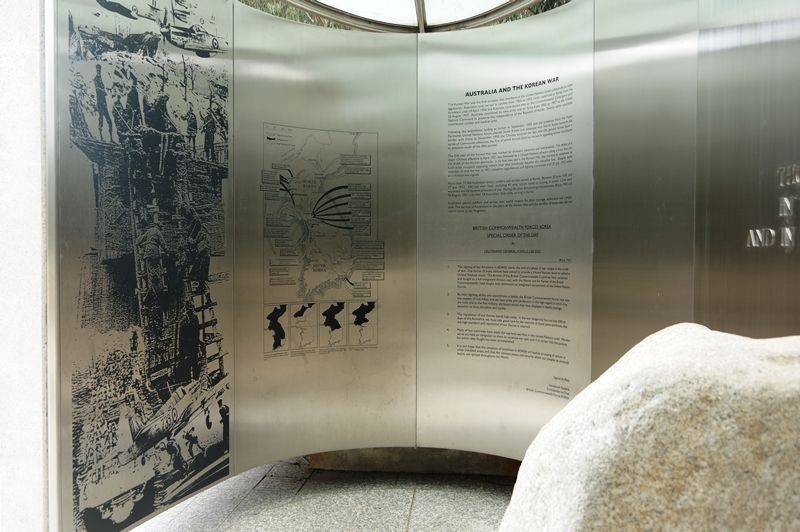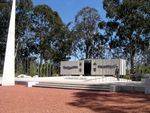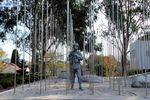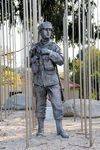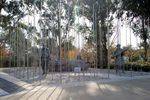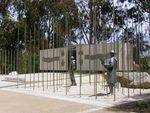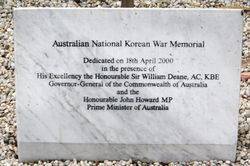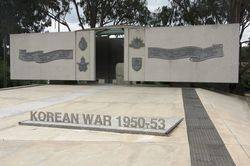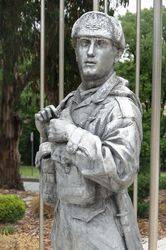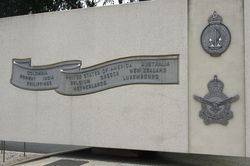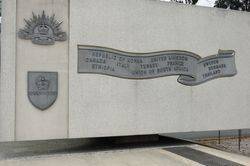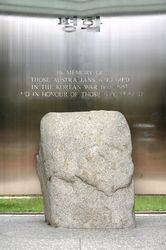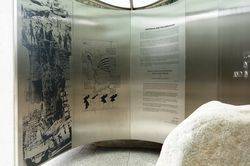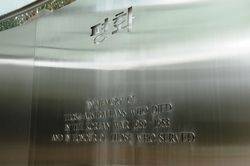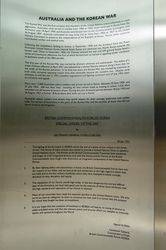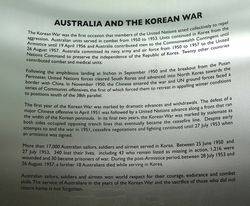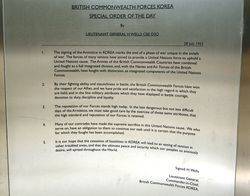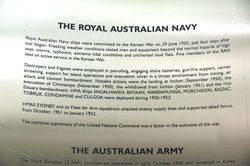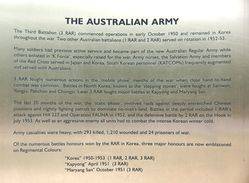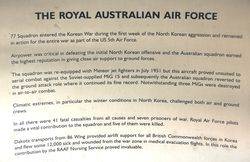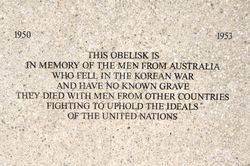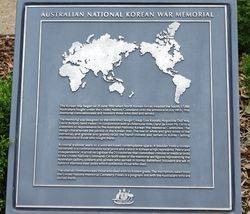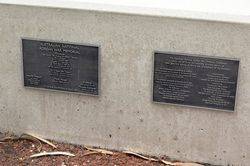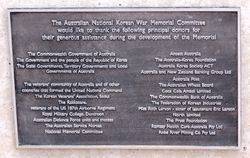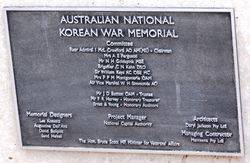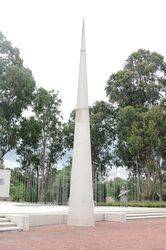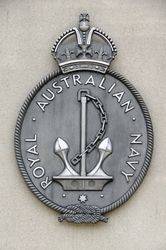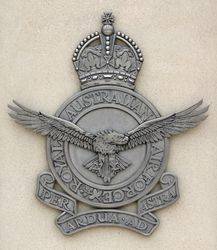
Australian National Korean War MemorialPrint Page 
The monument commemorates the 17000 Australians who served under United Nations command in the Korean War. The design characterises the period of the Korean War. The use of white and grey tones in the memorial, and granite and gravel, recall the harsh climate and terrain in Korea - lasting impressions of those who fought there. A central walkway leads to a semi-enclosed contemplative space.
A boulder from a Korean battlefield is a commemorative focal point and a word in Korean script represents `Peace and Independence`. A scroll recognises the 21 countries that committed combat or medical units to the United Nations Command. On both sides of the memorial are figures representing the Australian sailors, soldiers and airmen who served in Korea. Battlefield boulders are set in fields of stainless steel poles which symbolise those who died. The obelisk commemorates those who died with no known grave. The inscription, taken from the United Nations Memorial Cemetery, Pusan, is a poignant link with the Australians who are buried there.
Location
| Address: | ANZAC Parade, Reid, 2612 |
|---|---|
| State: | ACT |
| Area: | AUS |
| GPS Coordinates: | Lat: -35.285686 Long: 149.143876 Note: GPS Coordinates are approximate. |
Details
| Monument Type: | Monument |
|---|---|
| Monument Theme: | Conflict |
| Sub-Theme: | Korea |
| Actual Event Start Date: | 29-June-1950 |
| Actual Event End Date: | 27-July-1953 |
| Designer: | ANKWEM Design Group (Les Kossatz, Augustine Dall`Ava, David Bullpitt, Sand Helsel) in conjunction with architectural firm Daryl Jackson Pty Ltd. |
Dedication
| Actual Monument Dedication Date: | Tuesday 18th April, 2000 |
|---|
Korean War 1950 - 1953
Plaque :
Australian National Korean War Memorial
The Korean War began on 25 June 1950 when North Korean forces invaded the South. 17,000 Australians fought under the United Nations Command until the armistice in July 1953. This memorial commemorates and honours those who died and served.
The memorial was designed by the ANKWM Design Group (Les Kossatz, Augustine Dall`Ava, David Bullpit, Sand Helsel) in conjuction with the architectural firm, Daryl jackson Pty Ltd to a statement of requirements by the Australian National Korean War Memorial Committee, The design characterises the period of the Korean War. The use of white and grey tones in the memorial, and granite and gravel, recall the hasrsh climate and terrain in Korea - lasting impressions of those who fought there.
A central walkway leads to a semi - encloised contempaltive space. A boulder from a Korean battlefield is a commemorative focal point and a word in Korean script represents `Peace and Independence` A scroll recognises the 21 countries that committed combat or medical units to the United Nations Command. On both sides of the memorial are figures representing the Australian, sailors, soldiers and airmen who served in Korea. Battlefield boulders are set in fields of stainless steel poles which symbolise those who died.
The obelisk commemorates those who died with no known grave. The inscription, taken from the United Nations Memorial Cemetery, Pusan, is a poignant link with the Australians who are buried there.


